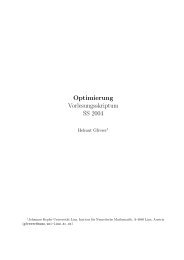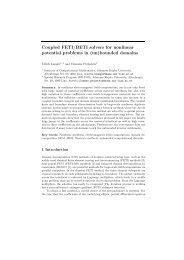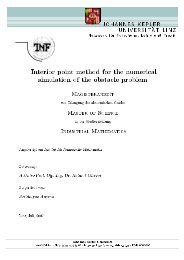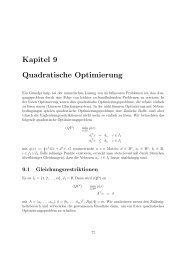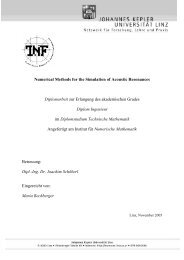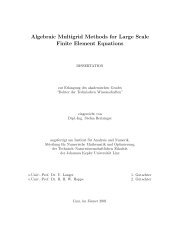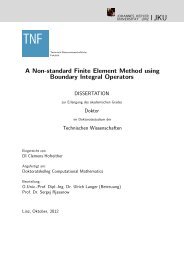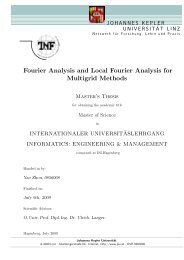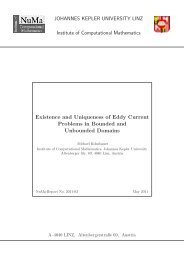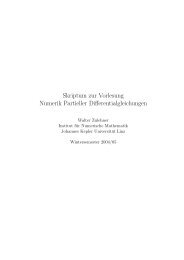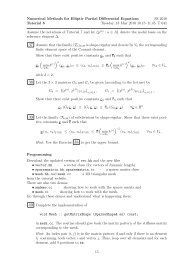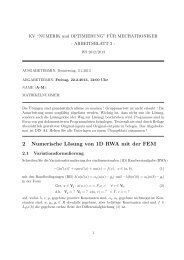PDF file - Johannes Kepler University, Linz - JKU
PDF file - Johannes Kepler University, Linz - JKU
PDF file - Johannes Kepler University, Linz - JKU
You also want an ePaper? Increase the reach of your titles
YUMPU automatically turns print PDFs into web optimized ePapers that Google loves.
Chapter 2<br />
Preliminaries<br />
The classical process for the numerical solution of partial differential equations (describing<br />
a physical phenomenon, in our case the Navier-Stokes equations describing the flow of<br />
an incompressible fluid, or the related Oseen or Stokes equations) is to derive a weak<br />
formulation, provide analysis, discretize the system (in our case with finite elements), and<br />
finally to solve the resulting linear algebra problems.<br />
This first chapter contains the parts of this process, from the problem formulation to<br />
(non-multigrid) solution methods for the arising linear systems.<br />
2.1 Navier-Stokes Equations<br />
Our main point of investigation will be the Navier-Stokes equations for incompressible flow<br />
(Claude Navier, 1785–1836, and George Stokes, 1819–1903). A mathematically rigorous<br />
derivation from fundamental physical principles and conservation laws can be found in<br />
[Fei93].<br />
We denote by u the velocity of the fluid, p the static pressure, ρ the density of the<br />
fluid, µ its viscosity and f some outer force. Then the instationary flow of incompressible<br />
Newtonian fluids in a domain G (where G is an open, connected subset of R d with Lipschitz<br />
continuous boundary ∂G) is governed by<br />
ρ ∂ u − µ∆u + ρ(u · ∇)u + ∇p<br />
∂t<br />
= f (2.1a)<br />
div u = 0. (2.1b)<br />
Equation (2.1a) expresses Newton’s law of motion, (2.1b) the conservation of mass.<br />
The underlying physical assumption for these equations to hold are incompressibility<br />
and Stokes’ hypothesis for the stress tensor<br />
for incompressible Newtonian fluids.<br />
T(u, p) = −pI + µ ( ∇u + ∇u T ) , (2.2)<br />
12



